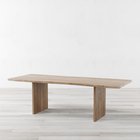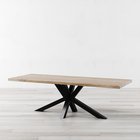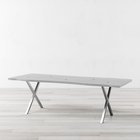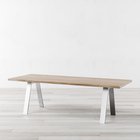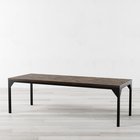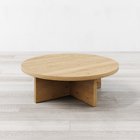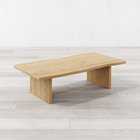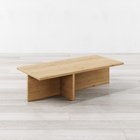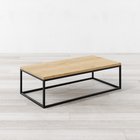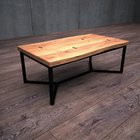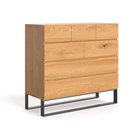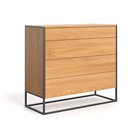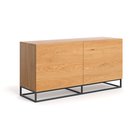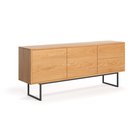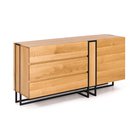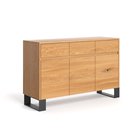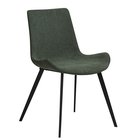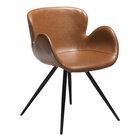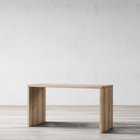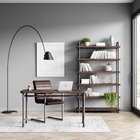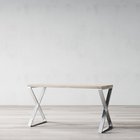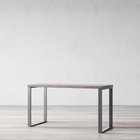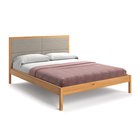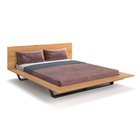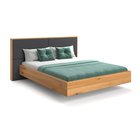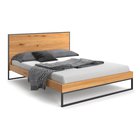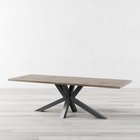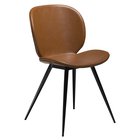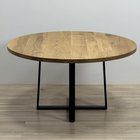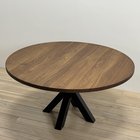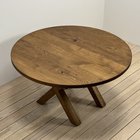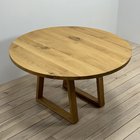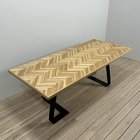Determining the optimal-sized dining table for your area and lifestyle is key to comfortable hosting. Consider activity space, seating requirements, room layout and personal style preferences when planning your purchase or DIY project. This guide covers critical measurements and design factors for choosing the perfect dining room table size to suit your needs.
Space Planning Guidelines
Before diving into calculations, it’s important to assess the available space in your dining room. The key is to balance the size of the counter with the amount of space you have, ensuring there's enough for movement and comfort.
Allow 36 Inches Per Seated Diner
Figure about 36 inches width across the table per seated guest with elbow room. For a 4-person square shape, allow roughly 4 feet per side. An oval or rectangular shape would measure about 4 feet wide by 5-6 feet long.
Mind Other Furniture Spacing
Make sure adequate walkways remain behind seated chairs pushed out from the surface. Try to allow 42-48 inches of clearance from board edges to walls, high-traffic areas, or neighboring furniture groupings.
Match Table Height to Chairs
Standard table height falls around 30 inches - tailored to the average eating chair seat height of 18 inches. Bar stool seating needs a taller 36-42 inch high for comfortable elbow placement.
Pick a Shape
Consider the shape that best suits your room layout, seating requirements, and visual preference.
- Rectangular maximize seating capacity along longer narrower Footprints
- Round promotes conversational intimacy but limits the total number of diners
- Square seats equal guests on all sides
- Oval combines round and rectangular benefits
Calculating Dining Table Size
Follow these steps to identify target dimensions once you've established the overall space available and guests to be seated.
Step 1. Determine Total Diners
Decide on the number of people your future dining set needs to comfortably accommodate at one time. Now add 2 extra seats to allow for occasional larger gatherings or pulled-up side chairs.
Step 2. Multiply By Comfort Factor
Take your total diner number and multiply by:
- 20 inches if you prefer cozy arrangements
- 24 inches for average comfortable spacing
- 30 inches plus for lots of personal space
This gives you the recommended table length if rectangular, or diameter if round.
Step 3. Adjust for Room Layout
Compare the surface size to your floor plan. Reshape as needed to fit spatially while delivering required seating. An oval or rectangular counter may squeeze into challenging footprints better.
Step 4. Accommodate Extra Functions
If also using the table for projects, board games, office work, or crafts, consider sizing up to provide ample functional surface for alternate activities when not eating.
Design Factors
Along with getting the right size table for dining room, don't underestimate the influence of aesthetics on desk selection.
Wood Type
Dark walnut dining tables impress with visual weight and richness. Light oak finishes keep rooms airy. Distressed paint techniques add cottage charm.
Table Base Style
Farmhouse trestle bases contrast beautifully with modern angular metal legs. Turned spindle legs reinforce traditional allure. Sculptural stone bases make unique artistic statements.
Additional Features
Look for expandable leaf inserts to accommodate occasional large gatherings. Self-storing extension slides disappear when not needed. Integrated storage benches maximize space efficiency.
Additional Tips for Perfect Dining Room Harmony
Extending Tables: Versatility for Entertaining
For those who love to host, an extended dining table is a game-changer. These tables come in various styles and sizes, expanding to accommodate additional guests when needed. They are especially useful in smaller spaces where a large counter isn't practical for everyday use. Consider options where the extension mechanism is easy to use, and the design complements the existing decor. Extending tables can be a focal point in your eating area, blending functionality with style seamlessly.
Mix and Match: Crafting a Unique Aesthetic
Embracing a mix-and-match approach can dramatically elevate the visual interest of your dining space. This could mean pairing a classic wooden table with more modern chairs or introducing different textures and colors through your tableware and accessories. The key is to strike a balance - too much uniformity can be bland, while too much disparity can lead to a chaotic look. Aim for a cohesive design that reflects your style and brings a sense of warmth and welcome to your dining area. This approach not only adds character but also allows you to blend various design elements harmoniously.
Closing Thoughts
Carefully calculated dining table dimensions transform mealtimes from cramped obligations to comfortable, memorable moments with loved ones. Follow these tips to discover your perfect table-size formula.

